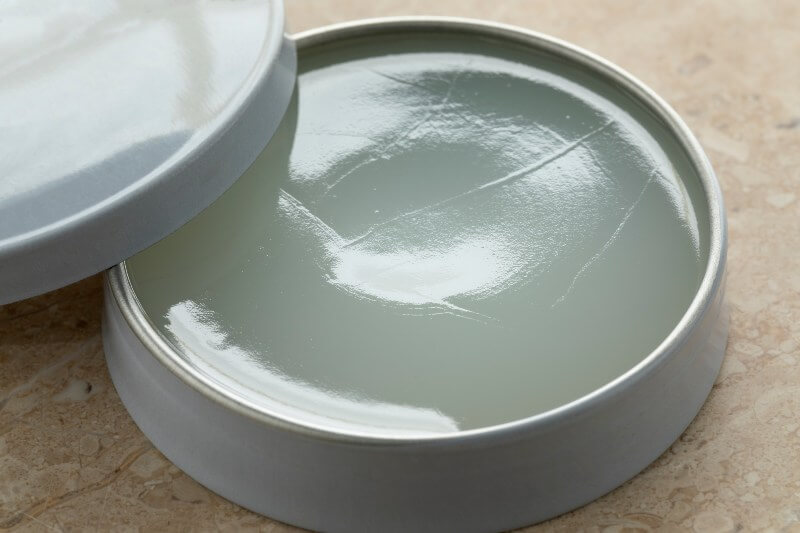Cleansing wipes, face masks, and toners. These are just some of the products we use to clean our skin every day. While all of these may seem like harmless ingredients on their own, when put together, they have the ability to do more harm than good.
Avoiding harmful ingredients in skincare is vital because it can give you a healthier complexion and provide a more youthful feeling. So what are these harmful ingredients that you should avoid in your clean beauty regime? Here is a list of a few common toxic ingredients to avoid in your skincare products.
1. Phthalates
Phthalates are industrial chemicals that are used to soften polyvinyl chloride (PVC) plastic. They add a good texture to your cosmetics. Unfortunately, as a solvent in beauty and other products, phthalates can damage the lungs, kidneys, liver, and even the reproductive system. Phthalates are mostly present in beauty products like nail paints, hair sprays, cleansers, and lotions.
Here’s how to know if your beauty products have phthalates in them. Look out for
- Dibutyl phthalates (DBP) – are used in nail polishes to make them less brittle.
- Dimethyl phthalates (DMP) – are used in hair sprays to help the spray form a flexible film on the hair and to avoid stiffness.
- Diethyl phthalate (DEP) – is used in fragrances as a solvent and fixative.
2. Parabens
Another ingredient to avoid in skincare products is parabens. Parabens like methylparabens, isobutylparaben, prolyparabens, and many more are a family of preservatives. They are essential skincare ingredients and are mainly used in to prevent the growth of bacteria and mold.
Whether parabens are safe or not is a decade-long debate. However, there is research published that shows parabens can harm our health.
In 2004, British scientist Philippa Darbre published a research paper published by Philippa Darbe that stated traces of parabens in breast cancer tissue samples. However, there wasn’t enough evidence to prove a link between paraben and breast cancer risk. However, the research did show that paraben can pass through the skin.
3. Petroleum Jelly

We bet it’s not the first time you’ve read the word ‘petroleum jelly.’ One of the most important skincare ingredients, petroleum jelly is found in lotions and skincare as a moisturizing agent.
Mineral oil, sometimes referred to as petroleum jelly, is safe for human consumption when refined appropriately. Unfortunately, most mineral oils are frequently not defined adequately in the United States, which might result in polycyclic aromatic hydrocarbons or PAHs. Some PAHs and other chemical combinations have been identified as human carcinogens and proven skin irritants. So stay away from skincare products containing paraffin oil, white mineral oil, paraffin oil, and liquid paraffin.
4. Formaldehyde
According to cancer.org, it “is a colorless, strong-smelling gas used in making building materials and many household products.”
Formaldehyde is commonly used as a preservative in nail polish. Significant evidence suggests that this particular component is, to put it simply, highly bad. It might also be present as a preservative in your cosmetics. According to research, this is a recognized carcinogen. Additionally, it has been associated with asthma, neurotoxicity, developmental toxicity, and general skin, eye, and lung irritation.
5. Synthetic Fragrance
Put in simple words, synthetic fragrance is an artificial fragrance made with chemicals. Synthetic fragrance can contain any combination of 3000+ stock chemical ingredients. The fact that no one really knows the name of this substance or its sources raises the majority of health concerns. They are additives, most of which are unknown, and frequently contain endocrine disruptors, carcinogens, developmental toxins, neurotoxins, and other harmful substances.
Synthetic fragrance is mostly found in the names like eau de toilette, perfume, essential oil blend, and aromas on their labels.
6. Sodium Laureth Sulfate (SLF) and Sodium Lauryl Sulfate (SLS)
Sulfates are most commonly used in cleaning products and shampoos. SLS is a foam booster and can cause irritation to your skin, lungs, and eyes. There is also a chance that it could harm non-reproductive organs and the environment. SLF is also used in a similar way but is often contaminated with 1,4 – dioxane. 1,4 – Dioxane is a carcinogen and can also cause irritation and allergic reactions.
7. Ethanolamines
Most cosmetic and skincare items contain ethanolamines, from moisturizers to baby sunscreen.
Monoethanolamine (MEA), diethanolamine (DEA), and triethanolamine are typical ethanolamines (TEA). These substances are mostly employed as cleaners, preservatives, or surfactants (foaming agents).
The FDA states that TEA is used as a fragrance, pH adjuster, and emulsifier. In contrast, DEA and DEA-related chemicals are utilized as emulsifiers or foaming agents in cosmetics or to change a product’s pH (acidity). However, it is worth noting that National Toxicology Program (NTP) study did discover a link between topical DEA application and some DEA-related chemicals and cancer in experimental animals.
While these eight ingredients aren’t likely to be found in a product advertised as “natural” or “clean,” they’re still harmful when they show up in beauty products without your knowledge. By reading the product ingredients list on the labels when you shop, you can avoid putting any of these ingredients on your skin and prevent any negative health effects.









